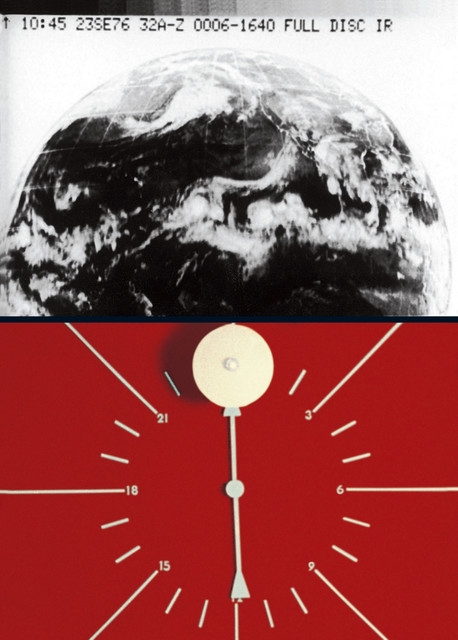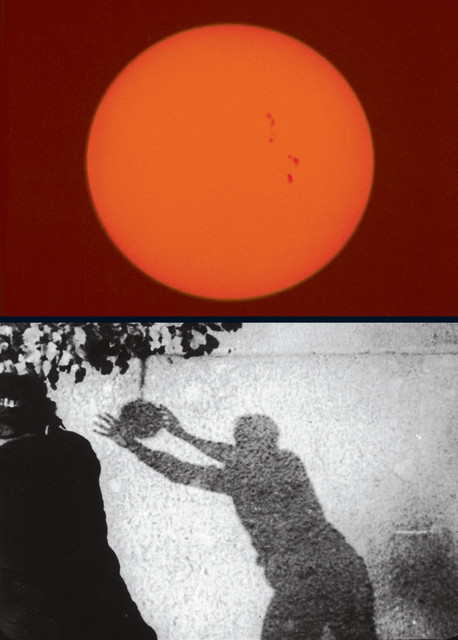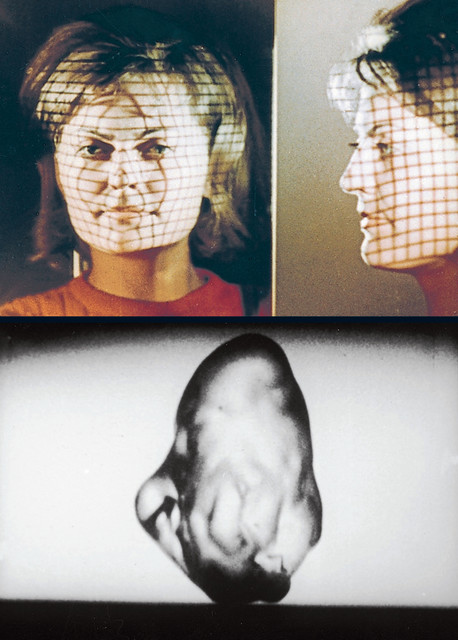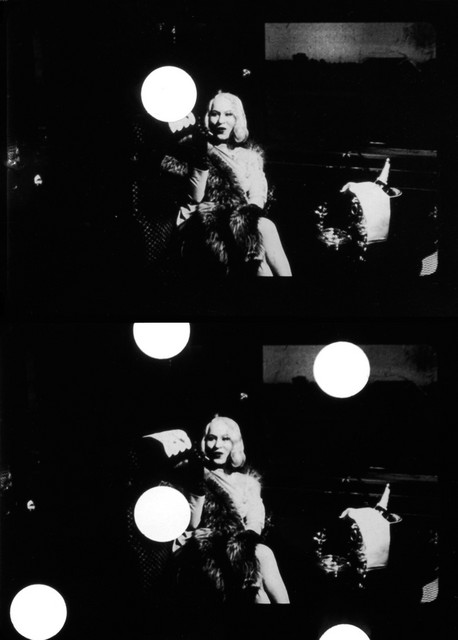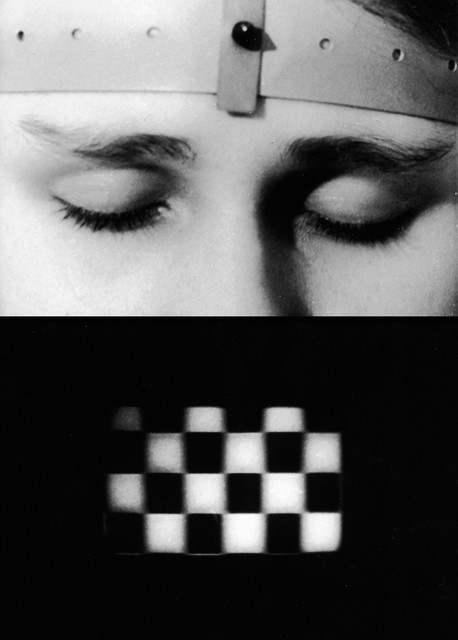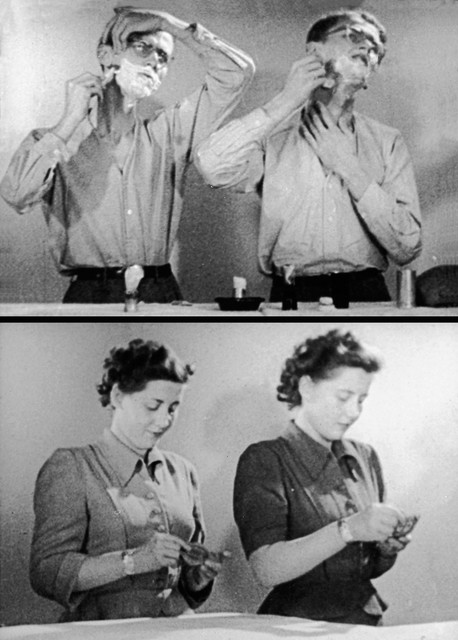Film ist. 1-6
1 Movement and Time
2 Light and Darkness
3 An Instrument
4 Material
5 The Blink of an Eye
6 A Mirror
Tableaufilm on the phenomenology of the medium film. The first six chapters are dedicated to the sientific laboratory as the first birth place of cinematography.
1
Movement and Time
In 1895, the Lumiére brothers called their invention a ‘movement inscriber’, a machine ‘to reproduce real life’. One might postulate that this was a statement contrary to their better knowledge. And as the brilliant constructors of what the American film artist Hollis Frampton called the ‘last machine’, they should have known better than anyone else about the great illusion which is cinema. An illusion achieved by recording and replaying movement using a series of stills and creating ‘real life’ with two dimensional black and white images. Nothing on a cinema screen is really ‘movement’, and nothing is ‘real life’. And that is not the weak point but rather the strength and greatness of film. A medium which creates cinematographic movement, time and reality.
2
Light and Darkness
„You would like to know, dear Sir or Madam, who was the chap who invented the cinema? Well, my dear Sir or Madam, as a matter of fact it wasn’t a chap. It was a girl. A girl from long ago: ‘A girl from long ago took a handful of embers and threw them up into the air; and the sparks became stars.’ “ With this Bushman tale, Stefan Themerson, the Polish film artist begins his book ‘The Urge to Create Visions.’ The course of the stars, the phases of the moon, eclipses of sun and moon, lightning - images of light in the projection booth of the sky. Periodically recurring inspiration for the myths of the peoples of the earth. The constant protagonists of world cinema. In today’s cinemas dark follows light forty-eight times per second. This is the rhythm in which the gate interrupts the light from the projector’s lamp and creates, together with the advance of the film a cinematographic storm of lightning flashes for our senses.
3
An Instrument
„However, my work has been in the direction of scientific research. I have never engaged in what is termed ‘production’“, said Luis Lumière in his last interview. Other film pioneers such as Georges Démeny and Etienne-Jules Marey also used their inventions as an instrument for scientific research work above everything else. Since the initial chrono-photographic series, successive scientists of our century have taken advantage of all the cinematographic possibilities to explore the world, while at the same time incorporating parallel developments such as X-ray film. The resulting pictures have not only changed our perception of the world, but also our ideas of life and death.
4
Material
„My cleaning lady used this film to clean the floor tiles“, said the salesman on the flea market in Sao Paulo, as he handed me a small roll of film. A working copy containing two frames from each scene of a feature film used to determine exposure times. The cleaning material had attacked the emulsion with enthusiasm. The painter Jackson Pollock opined that emotion was to be found in the material, in the paint itself, to which Francis Ford Coppola quipped that for film „the emotion is to be found in the emulsion“.
„I have an optical way of looking at the world. Things which cannot be seen posed for me problems of transparency“, said Konrad Zuse, the inventor of the first functioning computer. As a control system for the machine he invented in 1938, he used retired 35mm film into which he punched the coding. Zuse’s film, with a binary code superimposed on the iconic image, anticipates the process which has led to the melding of all medias (including film) in digital code.
5
The Blink of an Eye
Ingmar Bergmann called it once „a defect of the human eye“, by which he meant the phenomenon whereby an illusion of continuous movement is created although what is projected is but a series of still pictures. this phenomenon, called by Gestalt psychologists the phi phenomenon or the persistence of vision, commits the pictures to memory as they appear and, with a speeded-up projection, allows them to flow together in apparent continuity. „From the beginning cinema was a manipulation of the optical nerves and their time“, commented the media theorist Friedrich Kittler on the theme. The human eye and the way it functions - a camera obscura for perceiving cinematographic reality. „The spectator in the cinema reacts to the screen as if his brain was attached to an inverted retina at a distance“ (Edgar Morin).
6
A Mirror
„The cinematographic image...is what it is, which is film. It is neither a self denying mirror nor a self ignoring medium. It is itself the concretisation...of the function of a mirror; the embodiment of the reflection - a gaze which looks back“, wrote Micheal Kötz referring to the double function of the medium which the ‘cinematograph’ of the Lumière brothers incorporated. Camera and projector at the same time. „Filming fragments the imaginary pictures of the body humans ( in contrast to animals) have invested with a borrowed ‘I’ and which, therefore, is always their greatest love. It is exactly because the camera functions as a perfect mirror that it can liquidate the self-portraits stored in the psychic apparatus“, wrote Friedrich Kittler about the experience that not only actors and actresses are familiar with a confrontation with their ‘dismembered’ doppelgängers.
Alexander Horwath, "Flash (Energy transformation in modern Cinematography, in: Film ist.1-6, film booklet, 1998
Geoffrey Macnab, "A film that will never be complete", in: Dagkrant, Rotterdam Daily, 31.1.1999
Concept, Script, Editing
Gustav Deutsch
Research
Gustav Deutsch
Sound
Gustav Deutsch
Dietmar Schipek
Trick
Blow Up Filmtechnik
Synchro Trick
Production
loop media
Producer
Manfred Neuwirth
Support
Bundeskanzleramt Sektion für Kulturangelegenheiten
Land Niederösterreich Abteilung Kultur und Wissenschaft
Distribution / Sales
SIXPACKFILM
Lightcone
Canyon Cinema


